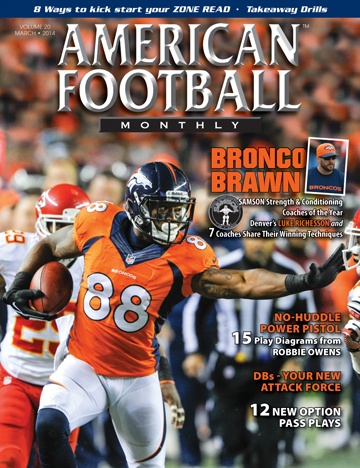Article CategoriesAFM Magazine
|
Systematic Innovation: The No-Huddle, Power Pistol Offenseby: AFM Editorial Staff© More from this issue For Head Coach Robbie Owens of Grand Junction High School (CO), the system’s the thing. He believes offensive innovation is important, but without a system that is simple, adjustable and easy to install and teach, the value of innovation can be diminished. Owens’ system has proved itself over multiple seasons of high-octane offense. By combining the pistol formation with a punishing running attack and an up-tempo, no-huddle pace, Owens’ Grand Junction teams have produced prolific numbers – an offense that averaged 436 yards per game last fall and 6,719 all purpose yards in 2011, for example. Coach Owens spoke to AFM about his innovative No-Huddle, Power Pistol system.
|
|
|||||||
| HOME |
MAGAZINE |
SUBSCRIBE | ONLINE COLUMNISTS | COACHING VIDEOS |
Copyright 2025, AmericanFootballMonthly.com
All Rights Reserved





